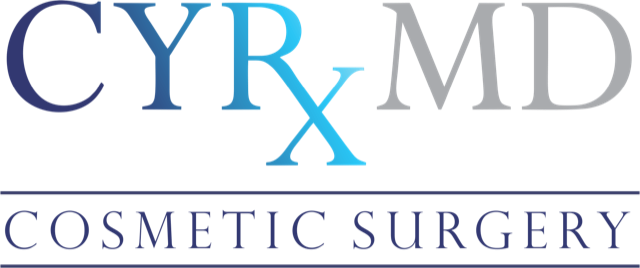The Tummy Tuck is an aesthetic surgical procedure also known as abdominoplasty. There are three common variations of this procedure:
- Mini tummy tuck
- Full tummy tuck
- Reverse tummy tuck
Each of the three procedures above consists of some or all of the following:
- Surgically removing abdominal fat
- Tighten or excise loose skin
- Repairing and tightening separated abdominal muscles
The end goal is to give patients a tight, flat stomach. If your surgeon does liposculpting, you may even get a hint of muscle definition in your abs and a more tapered waist.
Anyone considering a tummy tuck has questions, especially about which one is the most appropriate for them. This article will give you a basic understanding so that when you meet with prospective surgeons, you are informed.
What is a Tummy Tuck?
It is a cosmetic surgery to remove excess skin and abdominal fat, and in some cases, the abdomen muscles are tightened. Some cosmetic surgeons also do what is called “snatching” the waistline for female patients to give the 3D shaping vs. just addressing the front of the abdominal area. “Snatching” makes the shaping more visible and gives the hips more of a feminine curve. Traditional tummy tucks may result in a boxy shape when the tissue is pulled taut but sculpting the waist improves the tapered appearance of the waist.
In the case of pregnancy, or weight gain and loss, the skin is often stretched beyond its capacity to retract. Removal of excess and loose skin is an integral part of all types of tummy tucks.
The tummy tuck procedure eliminates abdominal flaccidity, offering firm, and flat results. For many patients, the change is physical and boosts their self-esteem and confidence.
Say Goodbye to Stretch Marks
Abdominoplasty is one of the five most performed cosmetic surgical procedures. Its popularity is due to its effectiveness in shaping the abdomen. Still, the procedure offers additional benefits, such as eliminating unwanted skin and smoothing the appearance of the skin that remains.
One of the most asked questions is, will a tummy tuck get rid of abdominal stretch marks. No exercise or working out can resort to skin with stretch marks. When your surgeon does a tummy tuck, they can remove much or all of the lax skin riddled with stretch marks. During your initial consultation, talk with the surgeon about what results you can expect from skin removal.
Types of Tummy Tucks
The needs of patients vary, so the type of tummy tuck surgery must be personalized for best results. The same procedure does not apply to all patients. Naturally, they want to achieve the best overall results with minimal / well-placed scarring. You and your surgeon will look at the three types of tummy tucks and focus on the one that gives you the results that fit your goals.
Full Tummy Tuck
Also known as the traditional Tummy Tuck, this is the procedure of choice in patients who have experienced significant weight loss or for women after childbirth. In this type of abdominoplasty, an incision is made below the bikini line from hip to hip, but the amount of excess skin will determine the shape and length of the incision. The surgeon lifts the abdominal skin, and the underlying weakened, separated abdominal muscles are repaired.
A second incision around the navel may be necessary to remove excess skin in the upper abdomen. The mark of a great surgeon is to ensure the belly button is in its correct place on the abdomen and that its shape is natural.
This is the most performed tummy tuck procedure as it addresses both the upper and lower abdomen.
Mini Tummy Tuck
The mini tummy tuck, also known as a partial tummy tuck, targets the excess fat and skin below the belly button. It is specific for patients who have experienced weight gain only in the lower abdomen. It is not the correct procedure for flaccidity in the ab muscles or upper abdomen.
The incision is generally smaller than a full tuck over the pubic region. If you have excess flab and skin below your navel, this is your ticket to show off your new summer body.
Reverse Tummy Tuck
This type of abdominoplasty is for patients with muscle tone or little fat in their lower abdomen, but their upper abdomen has excess skin and fat. A reverse tummy tuck is one of the best aesthetic “cures” for gravity as the body ages.
The incision is along the upper abdominal line under the breast crease. The excess of skin and fat from the upper abdominal area is excised, and the remaining skin is tightened. This surgery is often done simultaneously with a breast augmentation or lift.
What Type of Tummy Tuck is Right For You?
During your consultation, your surgeon will examine the condition of your skin, how much fat to remove, and underlying muscles. This will help them determine which tummy tuck is best suited for your needs.
Surgery is not the answer for all patients. Cosmetic solutions are best when a patient:
- Is close to their ideal or stable weight
- Has effective lifestyle habits to maintain weight
- Has realistic expectations about short and long-term results
- Is in good health overall
- Does not smoke
Your surgeon will order blood tests to ensure you do not have an infection and are not anemic.
Recovery After a Tummy Tuck
Although abdominoplasty is a fairly routine surgery, like all surgeries, it has risks, side effects, and complications. It is vital that you understand the risks and follow your doctor’s instructions both preoperatively and postoperatively. By following your doctor’s instructions to the letter, you will mitigate the most common risks.
They include infection, bruising, pain, bleeding, fluid build-up.
During the first two weeks of recovery, you avoid exercise. Your doctor will have you use the compression garment at all times to avoid fluid accumulation. This garment also allows your skin to become accustomed to its new shape and improves results.
Surgeons who augment fat removal with VASER liposuction will postoperatively recommend lymphatic massages to promote fluid drainage. After a full tummy tuck, you may benefit from lymphatic massage as it speeds up healing and prevents painful fluid accumulation.
Incisions and Scarring
With any tummy tuck procedure, you will have a scar. How the scar looks and heals is primarily due to three factors:
- The skill and experience of your surgeon
- Your genetic predisposition for healing, i.e., not prone to uncommon Keloid scarring
- How you care for your scar after surgery
Your surgeon may recommend a scar softening cream or pad. If they do not, you can find helpful information about products to minimize scars as they heal.
With a full tuck, incisions most commonly extend from hip bone to hip bone as well as a small incision around the belly button to preserve it for reattachment. This approach allows your surgeon to remove excess tissue below and above the belly button. Stretch marks in these areas are removed. The belly button is reattached to your skin through the newly created opening. An experienced surgeon will ensure the navel stays in its original place and shape on your abdominal wall.
If liposuction is part of your procedure, additional incisions are tiny and become near-invisible over time.
The mini tummy tuck is best for those with minimal excess skin or fat pockets limited to the area just below the belly button. This tuck is done with a smaller incision – often the same or a bit longer than a C-section scar. The healing and recovery for a mini tummy tuck are often less than that of a more traditional abdominoplasty.
With a reverse tuck, the scar will be in the breast crease and may not be visible at all.
How much does the Tummy Tuck cost?
The cost of the Tummy Tuck or abdominoplasty can vary greatly depending on the following:
- Demand for and experience of the surgeon
- The state the procedure is performed
- The complexity of the surgery (full or mini)
- Addition of other procedures
A tummy tuck surgery has a broad price range based on the amount of time required, the amount of tissue removed, and whether there have been previous surgeries in the same location. U.S. averages range from $5,200 to $7,000. The cost may not include things like:
- Medications
- Surgical suite fee
- Anesthesiologist’s fee
- Post-surgical garments
- Medical tests like red blood cell count, nicotine, COVID
Insurance companies do not cover cosmetic surgery, which usually includes procedures like tummy tucks. However, there are exceptions when a tummy tuck is considered medically necessary.
What’s Next
Deciding to have a tummy tuck necessitates a personalized consultation. When you meet with Dr. Cyr, he will answer all your questions and make a recommendation for the best results.
Fill out our contact form here to take your next step here or better yet, call today! 1 (833) CHISEL U | (833-244-7358).




